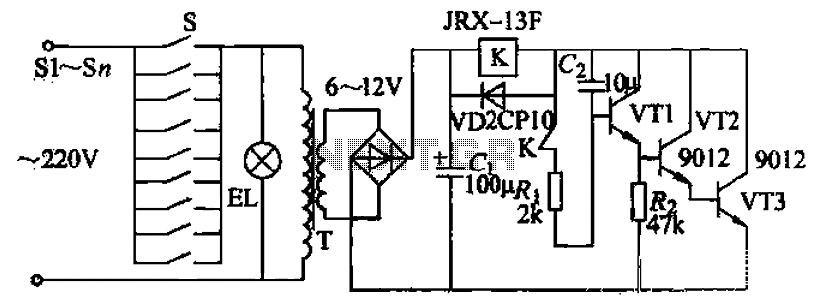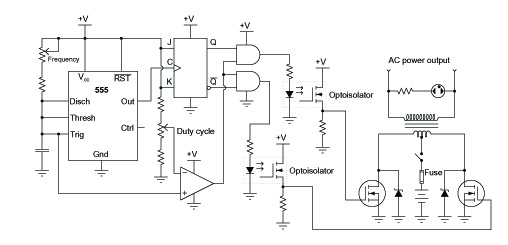
One-Way Voice-Activated Intercom Circuit

An omnidirectional electret microphone is utilized to capture sound and convert it into an electrical signal. The output from the microphone is directed along two pathways. In the first pathway, the signal is routed to the inverting input at pin 6. In the second pathway, the microphone signal is directed to the non-inverting input of U2, where it is amplified and subsequently sent to the speaker, SPKR1.
The circuit design incorporates an omnidirectional electret microphone, which is known for its ability to capture sound from all directions, making it suitable for various applications such as voice recognition and audio recording. The microphone generates a small AC voltage signal in response to sound waves, which is typically in the millivolt range. This weak signal requires amplification for effective use in audio systems.
The first pathway, leading to the inverting input at pin 6, is likely part of a feedback loop that could be implemented in an operational amplifier configuration. This configuration allows for signal inversion and gain control, enabling the circuit to adjust the output signal dynamically based on the input level. The choice of using pin 6 for the inverting input suggests a design that may focus on maintaining a stable output while minimizing distortion.
In the second pathway, the signal is fed to the non-inverting input of operational amplifier U2. This configuration is often used to amplify the microphone signal without inverting its phase, preserving the original sound characteristics. The amplification stage is crucial, as the output of the electret microphone is typically insufficient for driving speakers directly. U2 amplifies the signal to a level suitable for audio output.
Finally, the amplified signal is sent to the speaker, SPKR1. The speaker converts the electrical signal back into sound waves, completing the audio signal chain. Proper selection of components in this circuit, including resistors and capacitors, will determine the overall frequency response and performance of the microphone and amplification system, ensuring high-quality sound reproduction. An omnidirectional electret microphone can be used to pick up the sound and convert it into an electrical signal. The output of the microphone is fed along two paths. In the first path, the signal is sent to the inverting input at pin 6. In the second path, the microphone signal is fed to the non-inverting input of U2, where it is amplified and output to the speaker, SPKR1.
The circuit design incorporates an omnidirectional electret microphone, which is known for its ability to capture sound from all directions, making it suitable for various applications such as voice recognition and audio recording. The microphone generates a small AC voltage signal in response to sound waves, which is typically in the millivolt range. This weak signal requires amplification for effective use in audio systems.
The first pathway, leading to the inverting input at pin 6, is likely part of a feedback loop that could be implemented in an operational amplifier configuration. This configuration allows for signal inversion and gain control, enabling the circuit to adjust the output signal dynamically based on the input level. The choice of using pin 6 for the inverting input suggests a design that may focus on maintaining a stable output while minimizing distortion.
In the second pathway, the signal is fed to the non-inverting input of operational amplifier U2. This configuration is often used to amplify the microphone signal without inverting its phase, preserving the original sound characteristics. The amplification stage is crucial, as the output of the electret microphone is typically insufficient for driving speakers directly. U2 amplifies the signal to a level suitable for audio output.
Finally, the amplified signal is sent to the speaker, SPKR1. The speaker converts the electrical signal back into sound waves, completing the audio signal chain. Proper selection of components in this circuit, including resistors and capacitors, will determine the overall frequency response and performance of the microphone and amplification system, ensuring high-quality sound reproduction. An omnidirectional electret microphone can be used to pick up the sound and convert it into an electrical signal. The output of the microphone is fed along two paths. In the first path, the signal is sent to the inverting input at pin 6. In the second path, the microphone signal is fed to the non-inverting input of U2, where it is amplified and output to the speaker, SPKR1.





